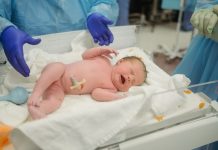
According to a study in 2021, the autism rate among 8-year-old children in the United States is one in 44.
The rate was the highest estimate to date by the CDC-Autism and Developmental Disabilities Monitoring (ADDM) Network since its inception in 2000.
The prevalence of autism prevalence has not plateaued.
In a new study from the Ben-Gurion University of the Negev, researchers found that routine prenatal ultrasound in the second trimester could identify early signs of Autism Spectrum Disorder (ASD).
In the current study, the team examined data from hundreds of prenatal ultrasound scans from the fetal anatomy survey conducted during mid-gestation.
They found anomalies in the heart, kidneys, and head in 30% of fetuses who later developed ASD, a three times higher rate than was found in typically developing fetuses from the general population and twice as high as their typically developing siblings.
Anomalies were detected more often in girls than in boys and the severity of the anomalies was also linked to the subsequent severity of ASD.
As Prof. Idan Menashe says, doctors can use these signs, discernable during a routine ultrasound, to evaluate the probability of the child being born with ASD.
Previous studies have shown that children born with congenital diseases, primarily those involving the heart and kidneys, had a higher chance of developing ASD.
The new findings suggest that certain types of ASD that involve other organ anomalies, begin and can be detected in utero.
Early diagnosis and treatment for ASD could increase the social ability by three times, shows early study.
Therefore, the prenatal diagnosis could mean a course of treatment from birth instead of waiting until age 2 or 3 or even later.
If you care about autism, please read studies about cats that may help decrease anxiety for kids with autism and findings that may develop better treatment for autism
For more information about child development, please see recent studies that scientists find an important cause of autism and results showing this type of food may contribute to autism.
The study was conducted by Ohad Regev et al., and published in Brain.
Copyright © 2022 Knowridge Science Report. All rights reserved.



